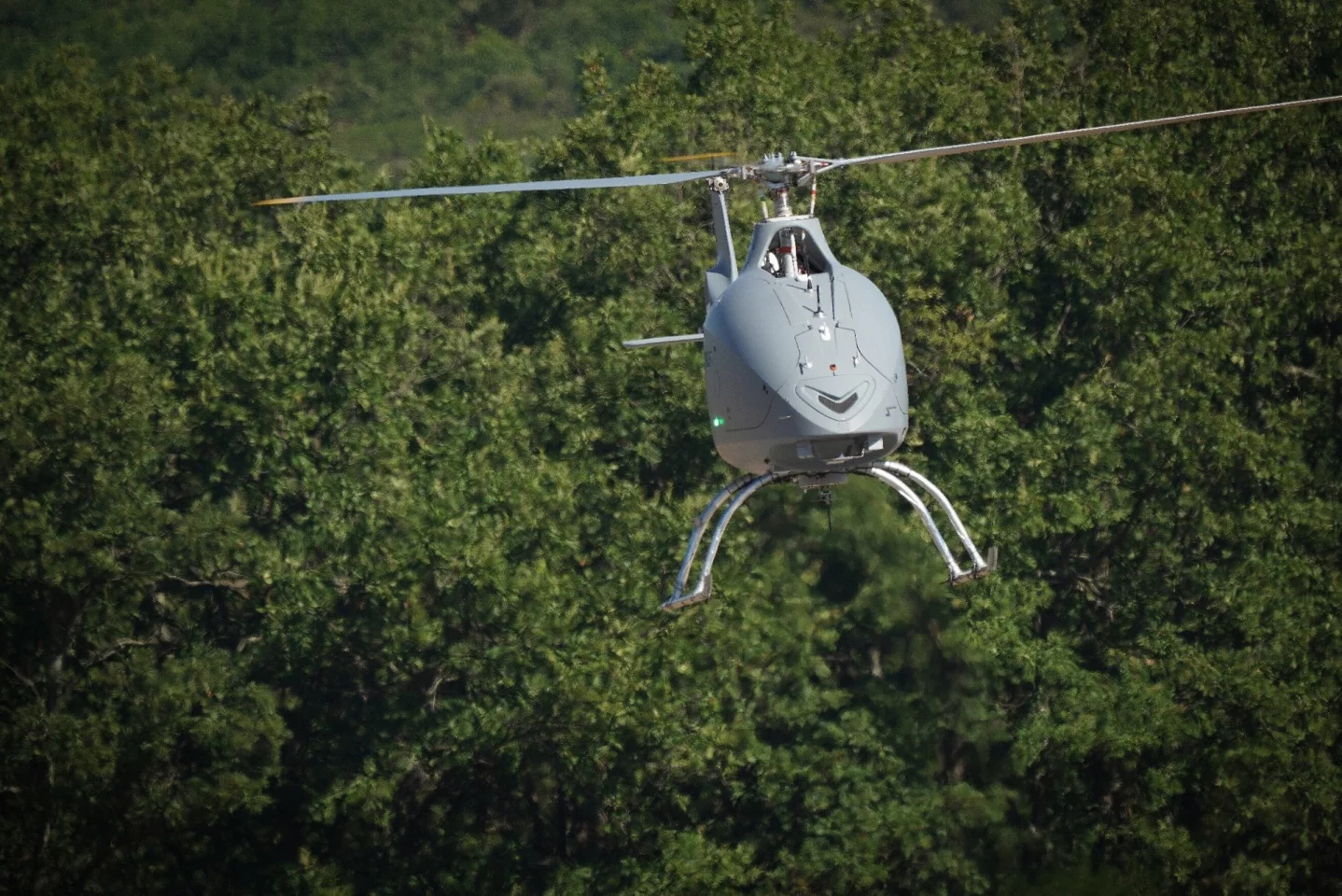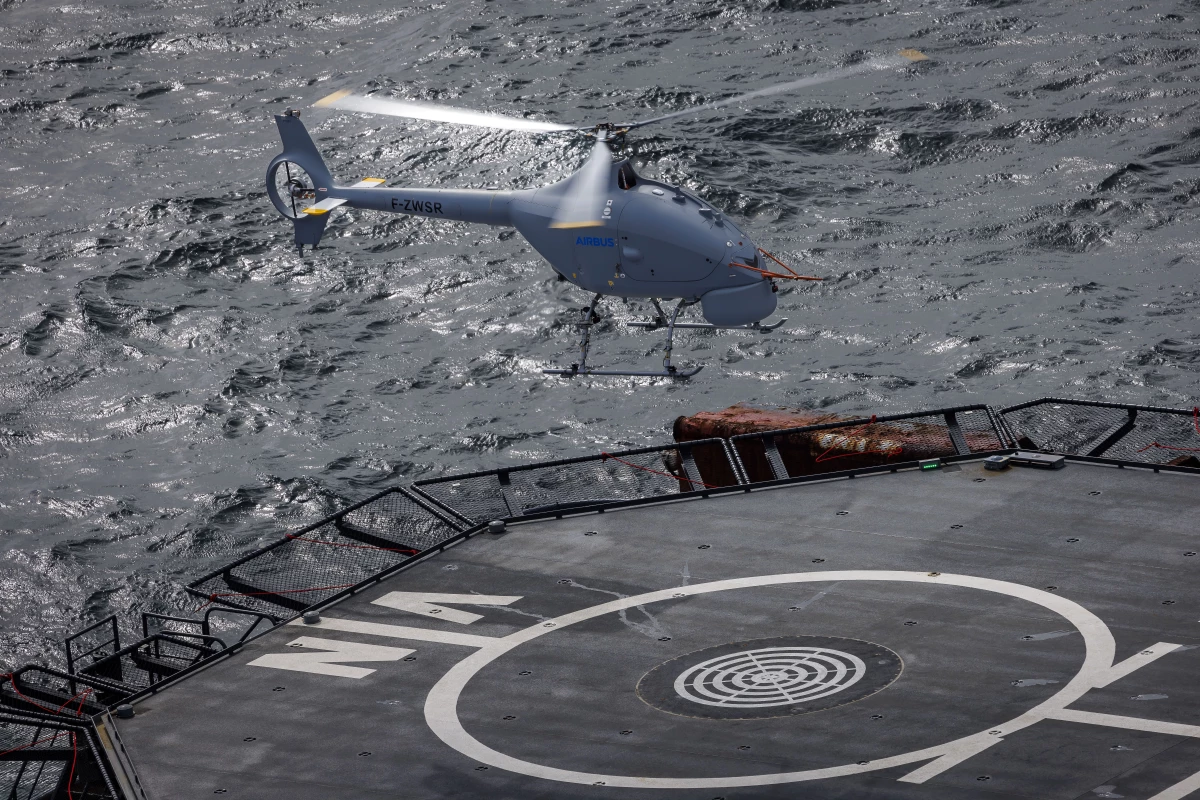Airbus' VSR700 robotic helicopter has successfully completed sea tests under operational conditions, including fully autonomous take-offs and landings in strong gale force wind conditions, from a civilian ship's helicopter deck.
UAV helicopters may look like strange toys, but they play a very serious and increasingly important military role, especially at sea. While many fixed-wing drones can be launched from aircraft carrier decks or from catapults, smaller ships in rough seas don't have this option, though decades of experience have proven how rotorcraft can be a real force multiplier for frigates and similar vessels.
The latest sea tests by Airbus Helicopters (formerly Eurocopter), Marignane, and the French Armament General Directorate (DGA) marks the first time the tactical VSR700 rotorcraft drone has been brought together as a complete system and flown at sea in an operational configuration.
Previously, as part of the French government's Système de Drone Aérien pour la Marine (SDAM) study, the Autonomous Take-Off and Landing (ATOL) systems designed for the VSR700 were tested at sea using a modified pilot-optional Guimbal Cabri G2 small helicopter.
In the latest test, the ATOL avionics were tested in the VSR700 itself across 80 fully autonomous takeoff and landing operations. The Airbus DeckFinder system is capable of taking off and landing on a frigate's pitching flight deck to an accuracy of as little as 10 cm (4 in) without the need for GNSS/GPS. It's just as accurate in zero visibility, thanks to a maritime surveillance radar, an electro optical sensor, and an Automatic Identification System (AIS) receiver.

"This flight test campaign was an important step for the VSR700 program as it allowed us to validate the excellent performance of the drone in operational conditions, which were representative of its future missions," said Nicolas Delmas, Head of the VSR700 programme at Airbus Helicopters. "The VSR700 prototype opened its flight envelope in winds above 40 knots, accumulated eight hours of testing in 14 flights, and made successful landings in several different sea states."
Over 40 knots, according to the Beaufort Wind Scale, represents "strong gale" conditions where you're likely to find waves between 23-32 ft (7-10 m) high, slight structural damage to buildings and slate blowing off roofs. Anecdotally, that's about the limit at which most human pilots, even the more experienced ones, will refuse to take off. So it's no picnic.
Capable of carrying a 220 lb (100 kg) payload, the VSR700 has a maximum takeoff weight of 1,543 lb (700 kg) and is powered by a single 155 bhp (116 kW) Thielert Centurion 2.0 diesel engine driving its 23-ft (7-m) rotor. Sporting a stealth profile, it has a cruising speed of 120 kn (138 mph, 222 km/h), an endurance of 10 hours – nearly twice that of a standard helicopter, and a service ceiling of 20,000 ft (6,000 m).

Its sensor package and small size allow it to carry out reconnaissance, intelligence, and surveillance missions as well as anti-submarine operations, maritime security functions, and rescue operations for frigates and destroyers.
With the successful tests aboard a civilian craft, the next phase will involve a second prototype later this year aboard a French Navy FREMM multipurpose frigate.
Source: Airbus Helicopters





